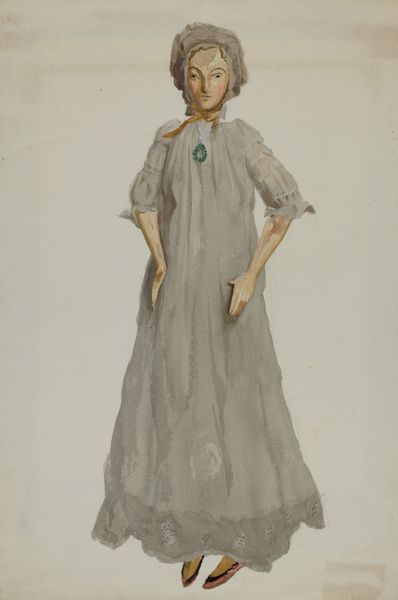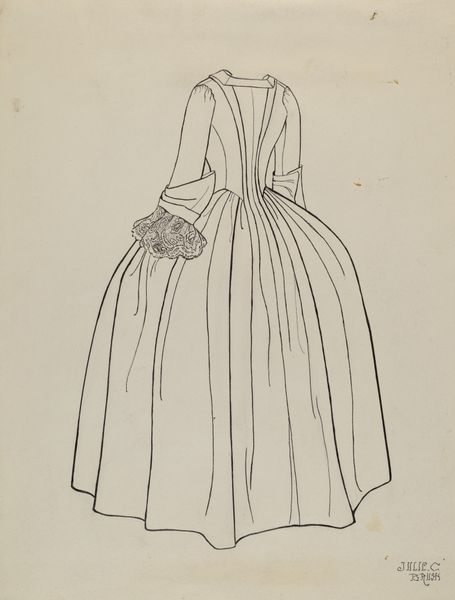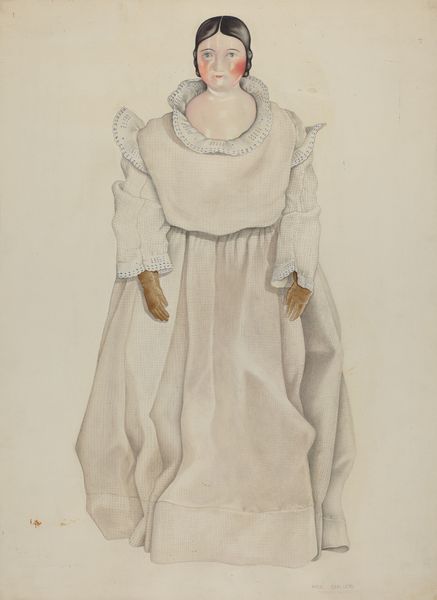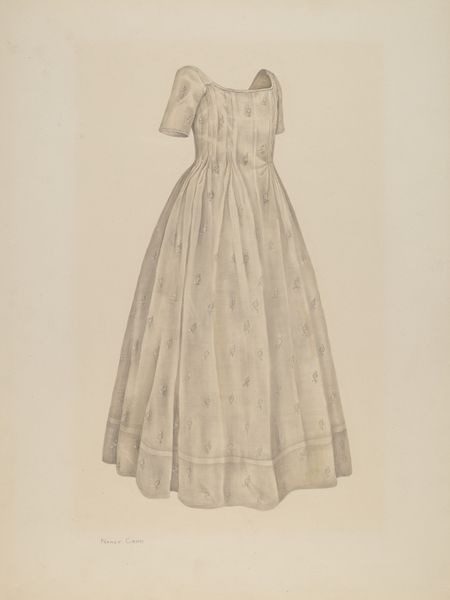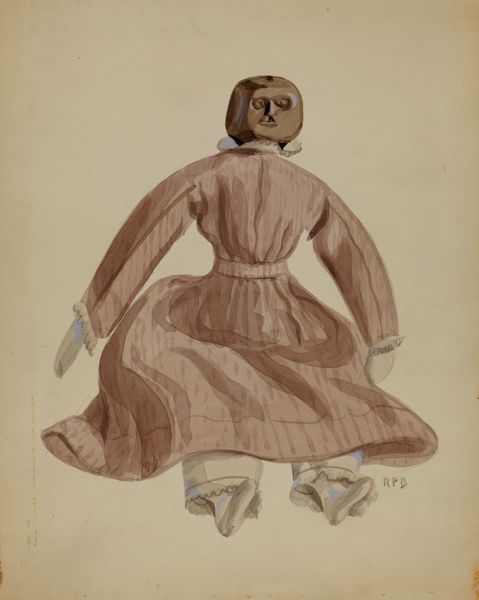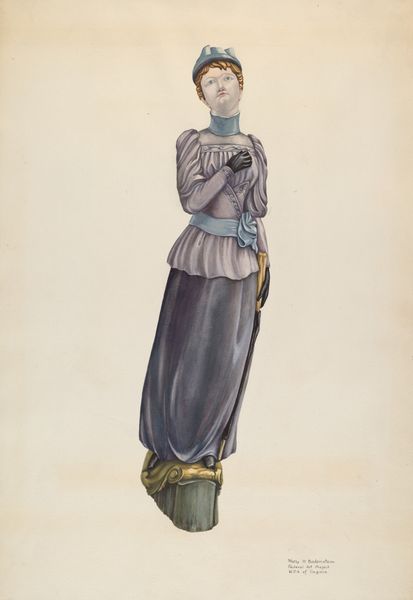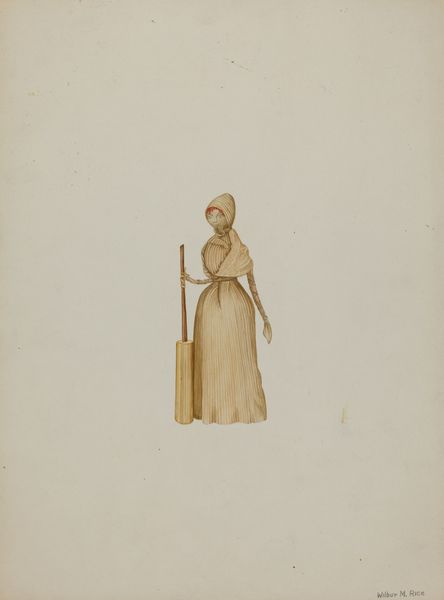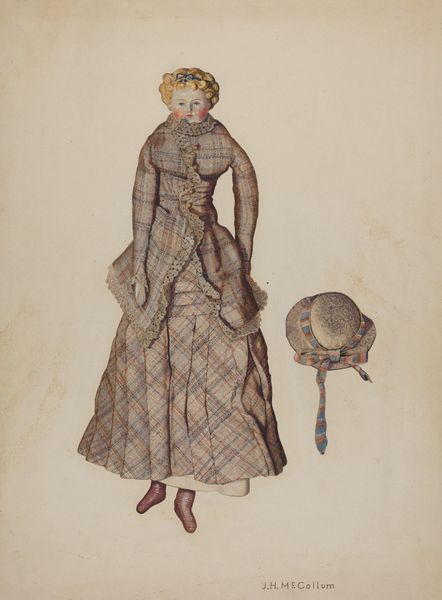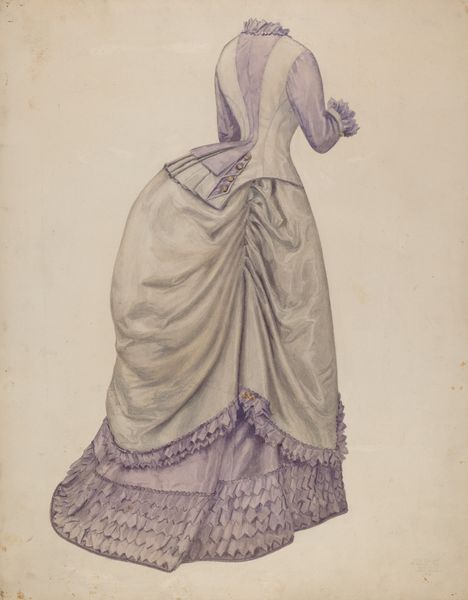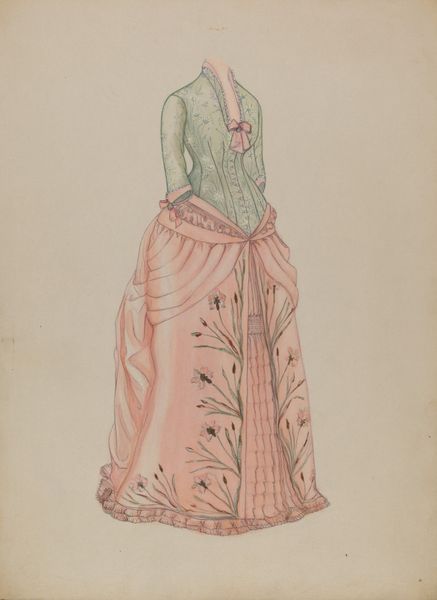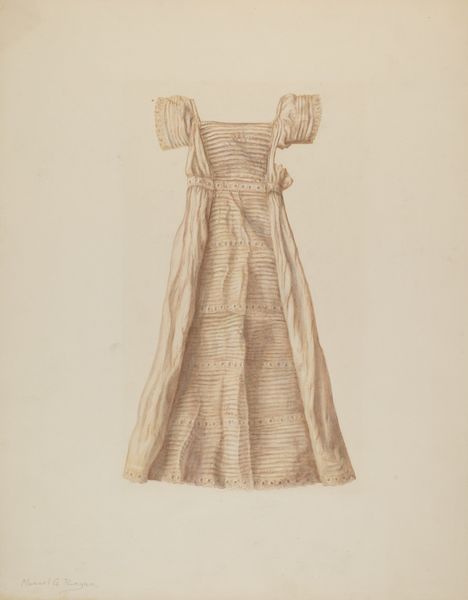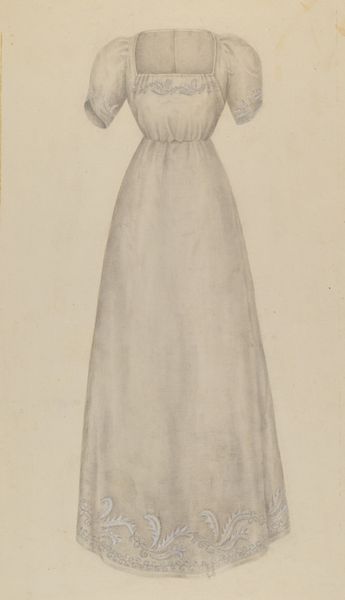
drawing, watercolor
#
drawing
#
narrative-art
#
charcoal drawing
#
watercolor
#
folk-art
#
watercolour illustration
#
watercolor
Dimensions: overall: 27.8 x 22.4 cm (10 15/16 x 8 13/16 in.) Original IAD Object: 8 1/4" high
Copyright: National Gallery of Art: CC0 1.0
Editor: So, this is Jane Iverson's "Corn Husk Doll," created around 1936, using watercolor and drawing techniques. It’s surprisingly delicate for a subject made of, well, corn husks! There's a quaintness to it. What can you tell me about this piece? Curator: Iverson's rendering reflects an interesting moment in American art history. The 1930s saw a surge of interest in American folk art and regionalism. How do you think the context of the Great Depression might inform our understanding of this interest in simpler, perhaps more ‘authentic’ subjects? Editor: Hmm, I guess during times of economic hardship, people might look back to simpler times, to traditions rooted in resourcefulness and maybe even self-sufficiency? Curator: Exactly! The corn husk doll, historically made by indigenous people and early settlers, becomes a symbol of that self-reliance. But consider the WPA Federal Art Project, which employed artists during the Depression. How might *that* institutional framework shape the art being produced about folk traditions? Editor: So, the very act of depicting the doll as a commissioned artwork in the 1930s somewhat changes the narrative and reception? Curator: Precisely. It transforms a common object into something of a nostalgic symbol, elevated through the platform of art institutions and perhaps presented to audiences increasingly removed from those lived experiences of self-sufficiency. What do you make of the doll’s fashionable attire— the hat, cape, and even a fan? Editor: The attire certainly does give the doll a certain elegance, a hint of civilization... even if made of such humble materials! I hadn't really considered all those angles to consider. It makes you rethink what this artwork might be telling its audience. Curator: Absolutely. It reminds us that art is always in dialogue with its historical context and that every detail can offer insights into how cultures represent themselves and their values.
Comments
No comments
Be the first to comment and join the conversation on the ultimate creative platform.

